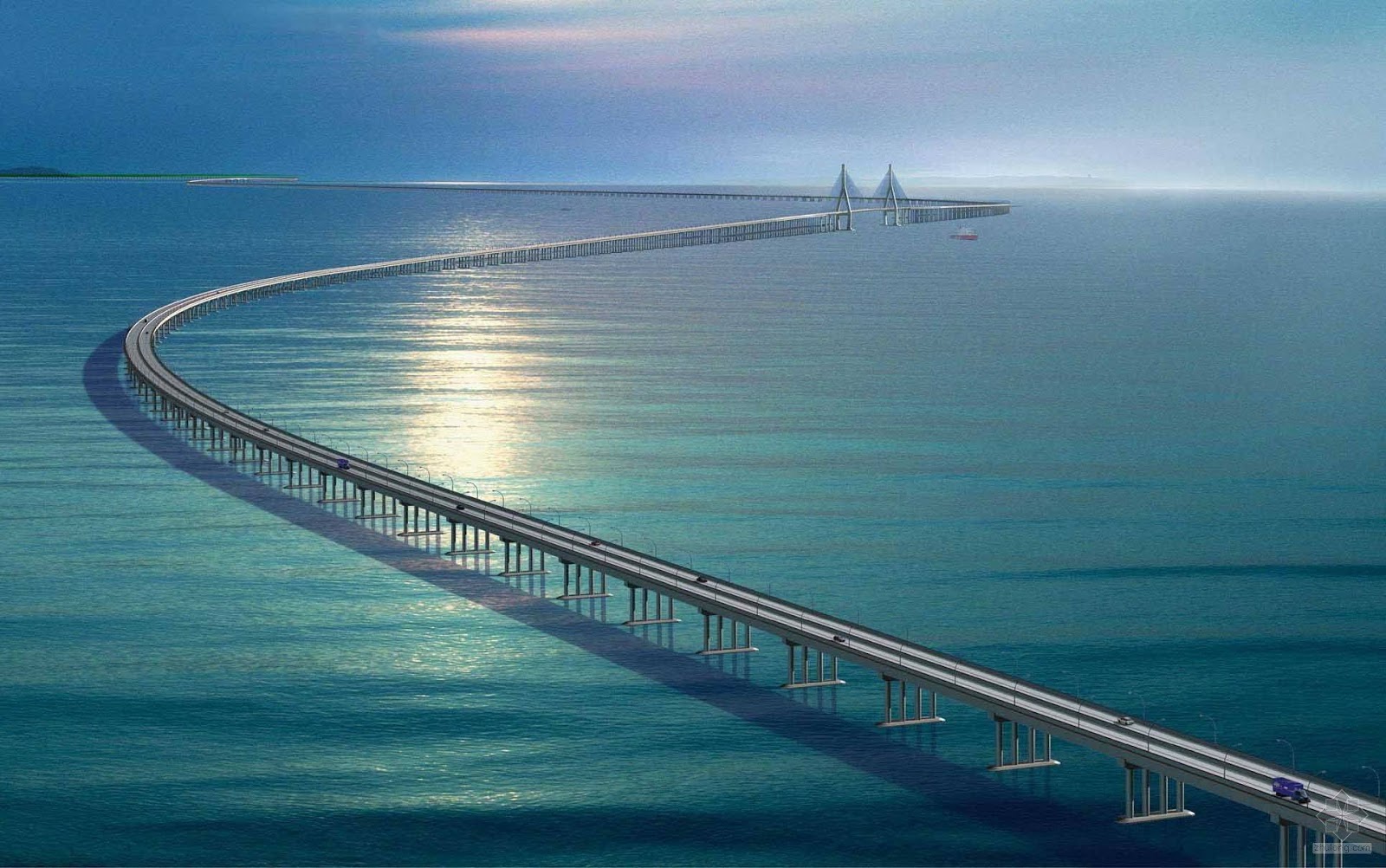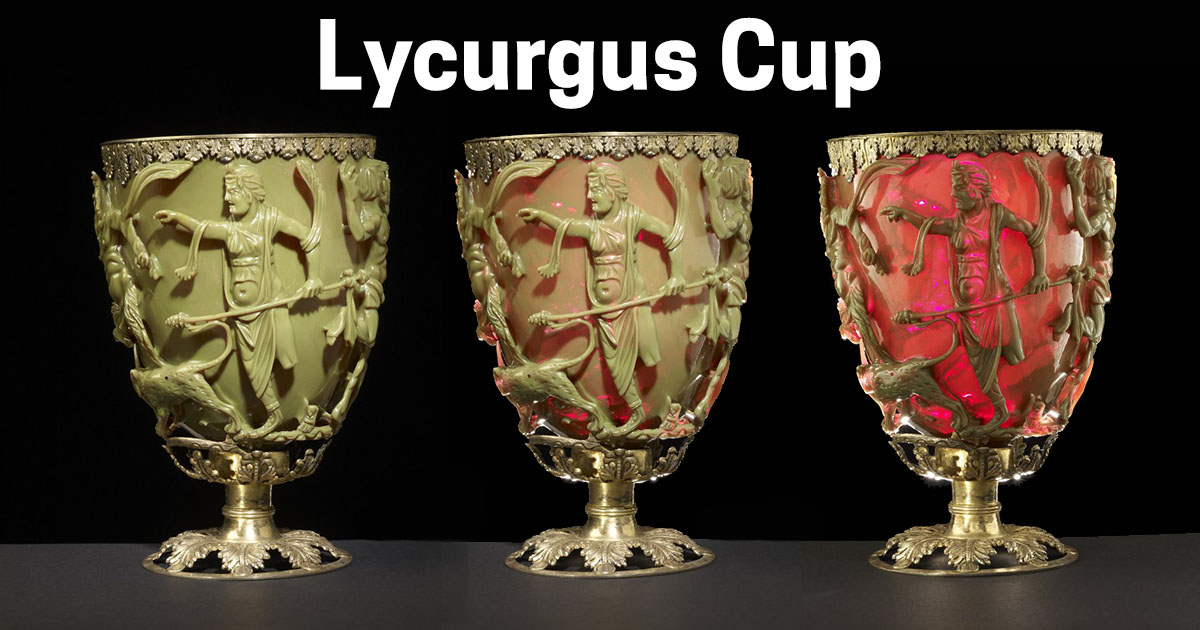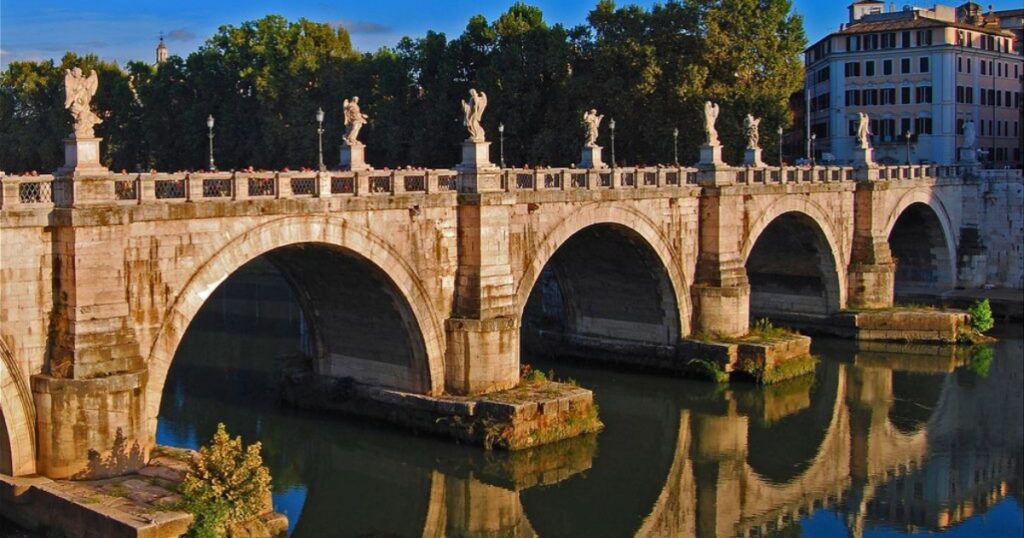
Bridges are built to ease the burden of transportation. The arch bridge is one such structure. Around a thousand vehicles pass over some of the busiest bridges in the world daily, most of which are trucks or lorries.
Therefore, these export bridges, which are used frequently to transport commodities from one location to another, must support thousands of tonnes of weight simultaneously.
What Are Roman Bridges?
Roman bridges are known for their round arches, which let them span farther than stone beams and last longer than wooden bridges. For longer bridges that needed more than one arch, it was important to build strong piers. This was a problem in wide rivers with soft beds where the piers couldn’t be built on rock.
The Romans came up with the cofferdam, a temporary wall made of wooden piles driven into the riverbed to make a sheath often sealed with clay, to solve this problem. The water inside the ring of piles was then filled with concrete. Most of the Roman bridges that are still standing were built on rock. Still, the Sant’Angelo Bridge in Rome was built on a cofferdam built in the Tiber River more than 1,800 years ago.
Roman bridges were in three main categories. These bridges were made of wood, pontoons, and stone. The engineer Colin O’Connor created a list of Roman bridges, including 330 stone bridges for traffic, 34 timber bridges, and 54 aqueduct bridges—many of which are still in existence and some of which are still used to transport vehicles.
The top 15 historical Roman existing bridges are listed below.
01) Bridge Fabricius
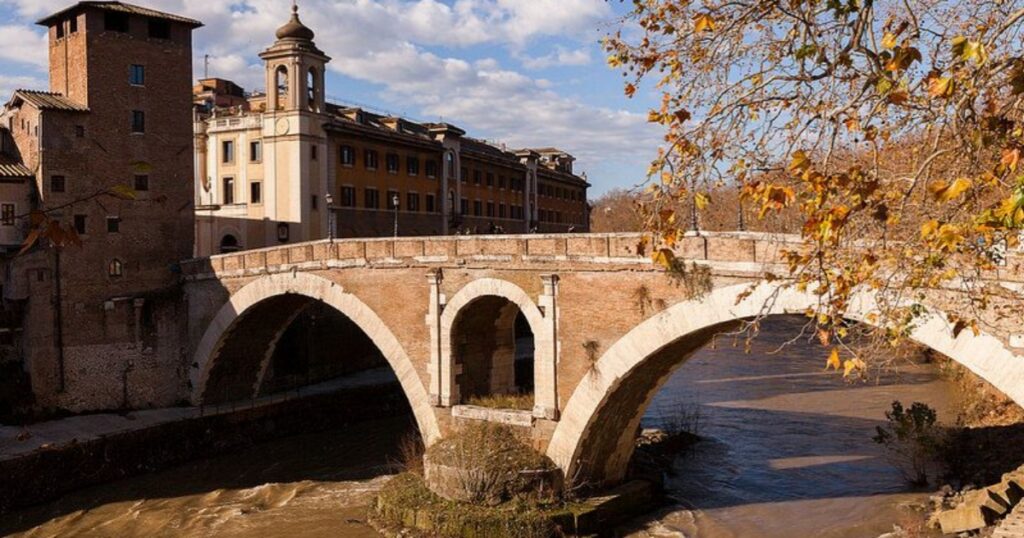
Lucius Fabricius likely erected the bridge in 62 BC to replace a wooden one that had burned down. Lucius had it written in four distinct places on the bridge, indicating that he ordered its construction. Two consuls named Marcus Lollius, and Quintus Aemilius Lepidus added modifications in 21 BC to assist in preserving the bridge following a flood in 23 BC.
However, it needs to be clarified exactly what the renovations were. It could have been the bridge’s little arch, which was added to release pressure during high tides. That contributed to the bridge’s longevity on its own.
02) Bridge Vecchio
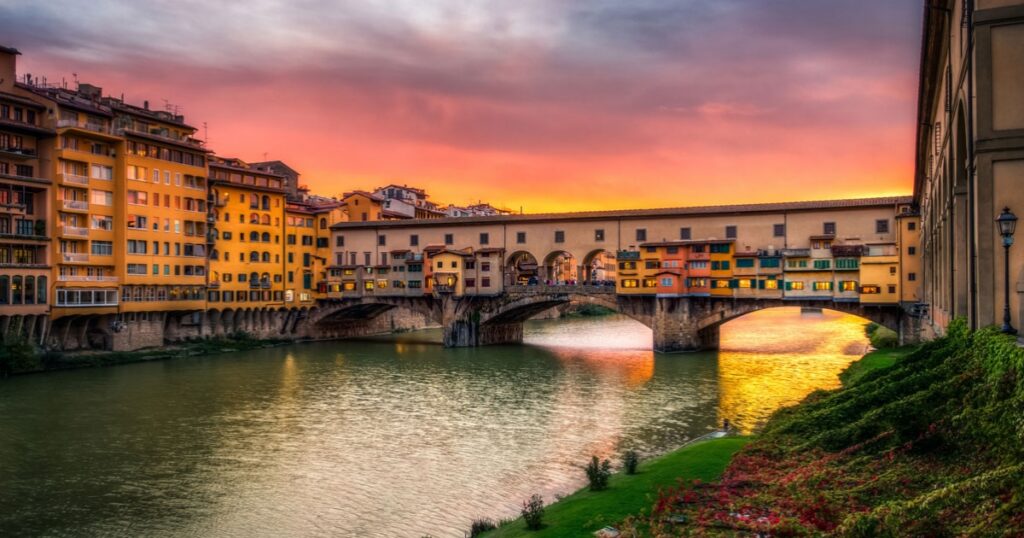
The Ponte Vecchio was constructed in Florence, Italy, in 1345. It was constructed to replace a wooden bridge that wasn’t very resistant to floods and is still in its former splendor. The remarkable thing about Ponte Vecchio, which translates to “Old Bridge,” is that it was designed to house a shopping arcade that is still in use today.
In the 1400s, the bridge used to be haunted by fishmongers and butchers, whose trades caused the bridge to smell bad. Grand Duke Ferdinand I ordered the merchants to leave. I forbade selling fish and animal items on the bridge since Florence was quickly emerging as the Centre of the Renaissance. He made it such that only gold- and silversmiths could conduct business on the bridge, which helped promote Florence to affluent foreign tourists.
This bridge would not have survived if it weren’t for a wartime gesture of respect. German soldiers fleeing Florence detonated every bridge they crossed to impede enemy forces during World War II. The only bridge left standing was Ponte Vecchio; the access to the bridge was destroyed rather than the bridge itself.
03) Bridge Di Rialto

In 1591, an Italian bridge was built to replace a demolished wooden one. Antonio da Ponte, who won the contest to design the bridge against Michelangelo and Palladio, faced severe opposition. Sadly, the locals were only somewhat fond of it after it was constructed. Critics praised it and scorned it, calling its design “top-heavy and ungraceful,” similar to the attention the Eiffel Tower attracted after it was completed.
The bridge has been around since it was built, despite the criticism. It had to be physically stable to support the row of shops that spans its Centre and have a 7-meter (24-foot) arch to allow galleys below. It is so sturdy that during riots in 1797, cannons were shot from it.
04) Bridge Roman Moselle

Around 18 BC, the Romans already had a wooden bridge over the Moselle. In this case, it was a Pfahljochbrücke. Dendrochronological tests were done in 1963 on the bridge piles to determine when it was built.
More dendrochronological research has shown that the first stone bridge was built in 45 AD, a little way down the river from where the Roman bridge is now. At low tide, it is said that you can still see parts of the pillars.
Between 142 and 150 AD, the pillars of the stone bridge we see today were built. Since the city was first built, this is the third bridge to stand here. The Romans built the pillars on the riverbed using blocks of basalt, bluestone, and watertight sheet pile walls.
The building materials came from the area around the old volcano Hohe Buche where they were mined. The pillars upstream of the bridge have been sharpened to make them more resistant to floods and ice.
05) Shaharah Bridge

Shaharah Bridge, located in Yemen, is also called the “Bridge of Sighs” (not the one in Venice). Shaharah Bridge, a road that spans a 200-meter-deep (650-foot) gorge and connects the mountains Jabal al Emir and Jabal al Faish, was constructed in the 17th century. For the people who lived on the two mountains, traveling between them required climbing down one mountain and up another, which was very difficult.
To save time and energy, a bridge was built to efficiently connect the communities on the two slopes. Not only was it a hub for transit. It had to be reinforced because it was Shaharah’s sole entrance to help stave off Turkish invaders.
The villagers are supposed to be isolated from danger by the ability of the inhabitants to collapse the bridge quickly. Shaharah Bridge is a popular tourist destination today, and locals still utilize it as a functional bridge for transportation.
06) Bridge Cendere

This bridge, also called Severan Bridge, was erected in Turkey in the second century by four Kommagenean cities. Its purpose was to pay tribute to Septimius Severus, Julia, and their two sons, Caracalla and Geta, who were all Roman emperors.
While incredibly old, it also distinguishes itself as the second-longest Roman arch bridge. Severus and Julia are represented on one side. At the same time, Caracalla and Geta are shown on the other by two columns constructed to symbolize the members of the emperor’s family. You’ll see the Geta column is missing if you look at them for yourself.
According to sources, this is owing to the continuous rivalry between Caracalla and Geta, who were reportedly killed while in his mother’s arms. Caracalla went so far as to order the execution of Geta’s friends and allies. Caracalla decreed that all references to Geta’s name should be removed from history and that the column honoring him should be destroyed as a final blow to his memory.
07) Bridge Anji
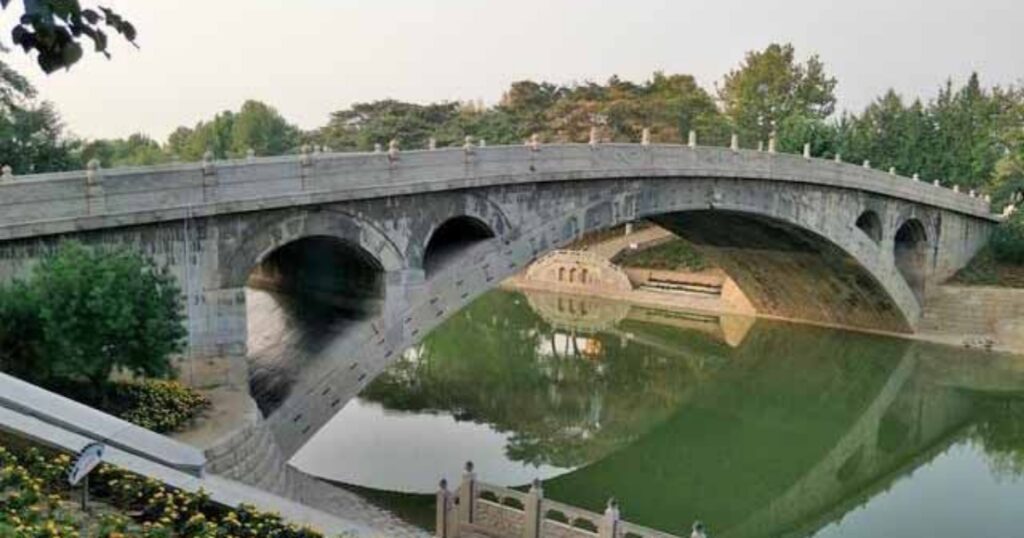
Anji Bridge, also known as Zhaozhou Bridge, was constructed in AD 605 and is the oldest bridge in China. Given that its name translates to “Safe Crossing Bridge,” you can know it was made to last. It was designed to be among the best in the entire world. Due to having the biggest arc at the time, it was the bridge with the most modern technology.
The bridge continued to receive recognition even after it was built; the American Society of Civil Engineers recognized it as the 12th milestone in global civil engineering and presented it with a bronze monument. While being extremely ambitious, it’s clear that the Anji Bridge didn’t scrimp on a design since it’s still stable enough to traverse.
The bridge has withstood more than just the test of time. Despite surviving ten floods, eight wars, and countless earthquakes, it has only needed repairs nine times over its known history.
08) Bridge Sant’Angelo
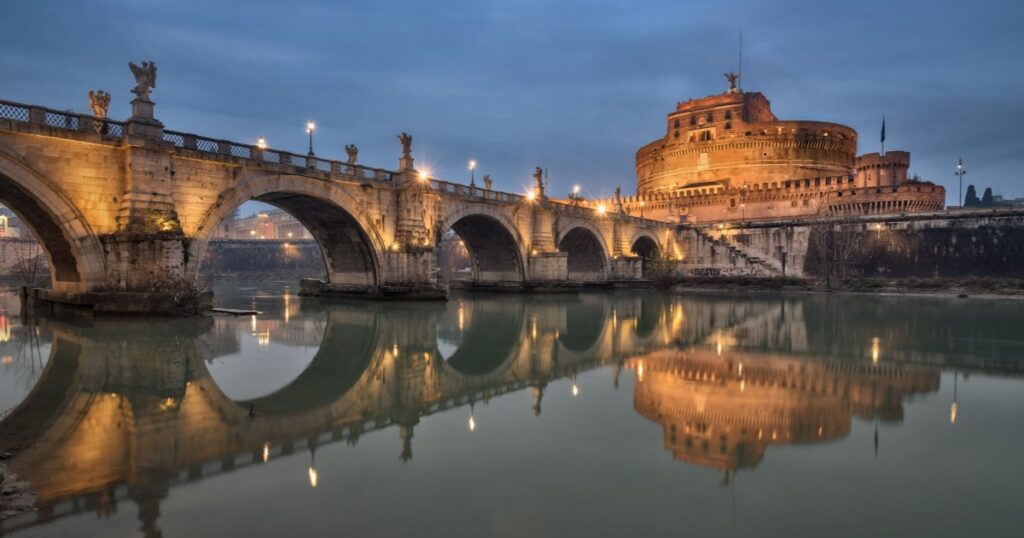
Ponte Sant’Angelo (Bridge of the Holy Angel), one of Rome’s most well-known and beautiful bridges, was built following an order from Emperor Hadrian in AD 136. Hadrian’s construction of the bridge to link all of Rome to his own mausoleum, the Castel Sant’Angelo, was a self-indulgent deed (Castle of the Holy Angel).
Due to the statue of the archangel Michael atop the tomb itself, they are both referred to as being “of the Holy Angel.” According to legend, the angel miraculously ended the epidemic in Rome in 590 BC by appearing on top of the same structure.
Long after Hadrian was alive to witness it, one of the bridge’s more stunning improvements was made. The bridge was improved in 1668 by sculptor Lorenzo Bernini, who created two of the 10 angels that adorned its length. Each angel is holding a representation of Jesus’ crucifixion, such as a whip or a crown of thorns. It’s a terrific tourist destination because the bridge and the angels are still there after all these years.
09) Bridge Milvio
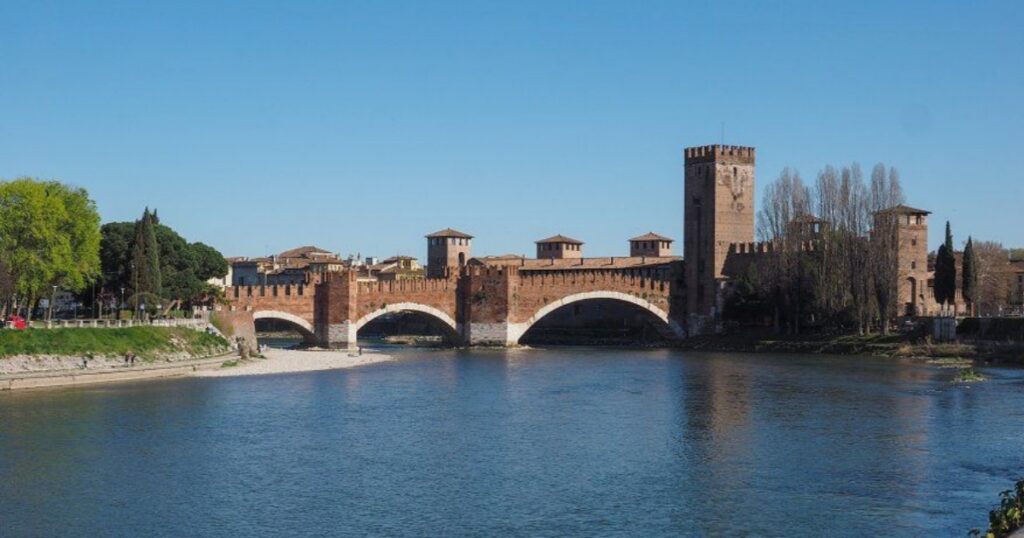
It was integrated into a stone bridge about 110 b.C., probably having Ponte Milvio as a key location for economic and strategic reasons throughout the reign of the Roman Empire. The battle of the Milvian Bridge, which took place in 312 between the emperors Constantine and Maxentius, made it famous in antiquity.
Giuseppe Valadier, an architect, restored it between the 18th and 19th centuries, giving it a neoclassical look, even if Garibaldi had to blow it up a few years later to thwart a French onslaught. Romans refer to it as “the soak bridge” because it would be the first to be flooded if the Tiber were to overflow.
10) Bridge Sisto
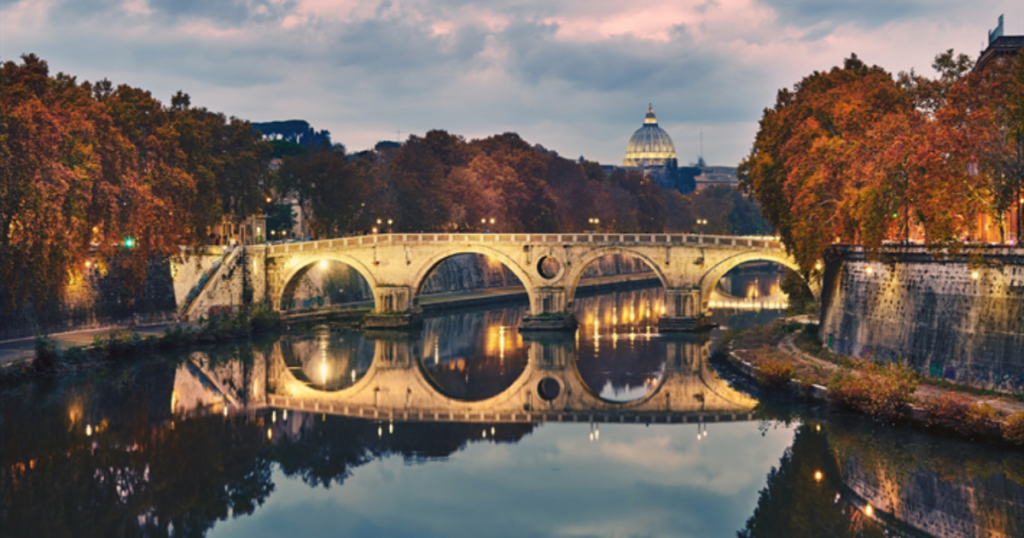
It was constructed in 1400 to link Trastevere, the city’s center, with the other side of the river in place of an old Roman bridge. Its name comes from Pope Sixtus VI, who also ordered the building of the Sistine Chapel and requested the bridge’s construction.
According to legend, the Roman prostitutes who paid taxes to the Curia funded rebuilding the bridge as it is now. Ponte Sisto is one of the most visited bridges today because it provides breathtaking sunsets and views, uplifting scents, and noises for your stroll.
11) Old London Bridge
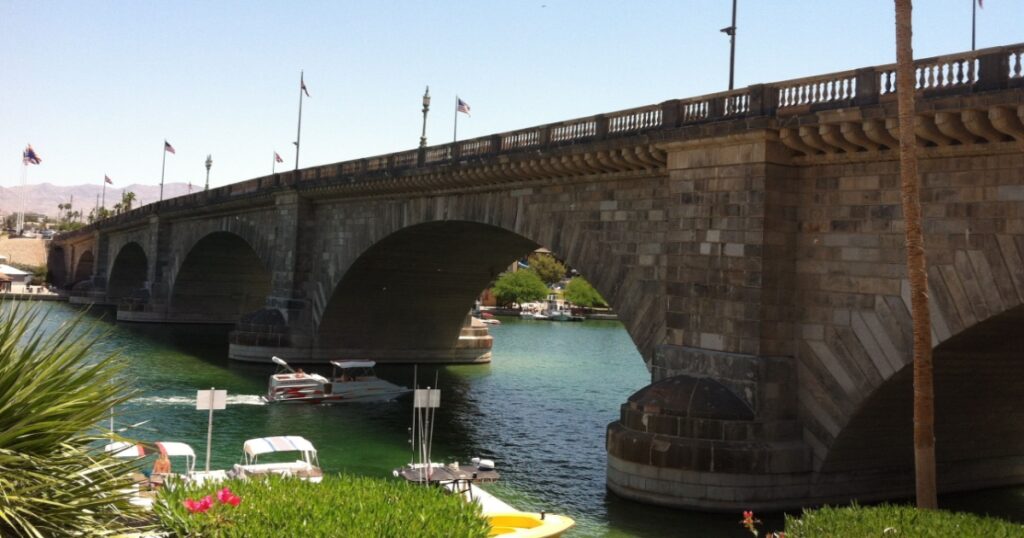
The development of European bridges slowed down significantly after the fall of the Roman Empire until the Renaissance. But here and there, excellent bridges appeared. The ogival, or pointed arch, is a distinctive feature of medieval bridges.
There is less horizontal thrust at the abutments and less hazard from the inclination to droop at the crown with the pointed arch. Bridges from the Middle Ages had numerous uses. On them, chapels and stores were frequently constructed, and many of them were fortified with towers and ramparts.
Some had a drawbridge, a development from the Middle Ages. Old London Bridge, built in that era under the direction of a priest named Peter of Colechurch, was the most well-known bridge. It was finished in 1209, four years after Colechurch’s passing.
12) Bridge Alcantara
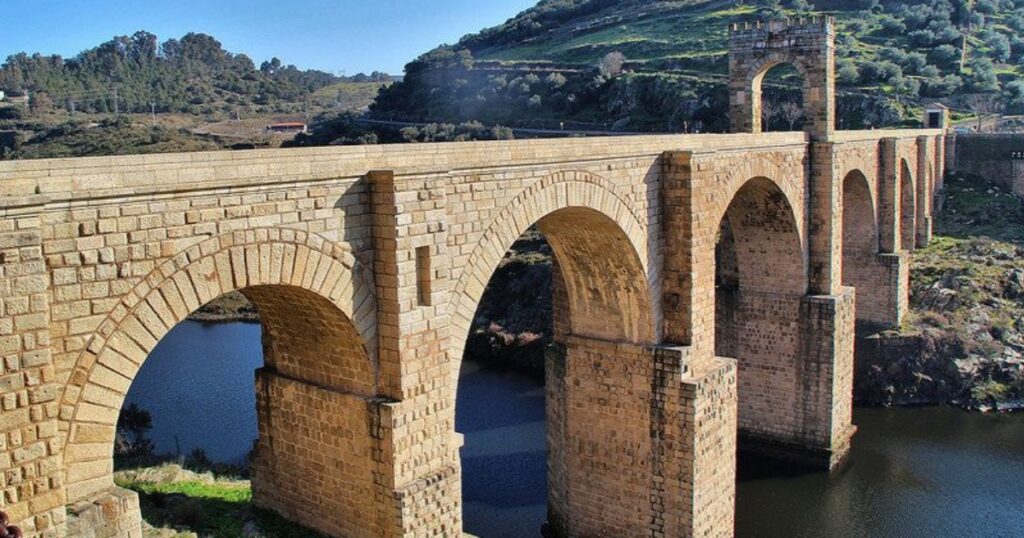
Romans constructed many wooden bridges that have yet to remain, and their masonry bridges give them their renown. One stunning example is the bridge that spans the Tagus River in Alcántara, Spain. The arches have massive arch stones (voussoirs) that can weigh up to eight tonnes each and span 29 meters (98 feet).
The voussoirs at Alcántara, typical of the best stone bridges, were so precisely shaped that no mortar was used in the joints. Nearly two thousand years have passed since this bridge was built.
13) Bridge Cestio

A stone bridge called the Ponte Cestio or Pons Cestio connects Rome’s Trastavere neighborhood to Tiber Island. The second-oldest bridge in Rome was constructed between 62 and 27 BC. Between 1888 and 1892, as well as in the fourth century, the Ponte Cestio was reconstructed. Fifty-four meters long and 8 meters wide, the bridge.
Pons Aurelius, Pons Gratiani, Ponte di San Bartolomeo, and Ponte Ferrato are just a few of the names that Ponte Cestio has gone by over the years. This bridge in Rome is composed of roughly one-third of its original stones, and the remaining are from a 19th-century renovation.
14) Bridge Umberto I
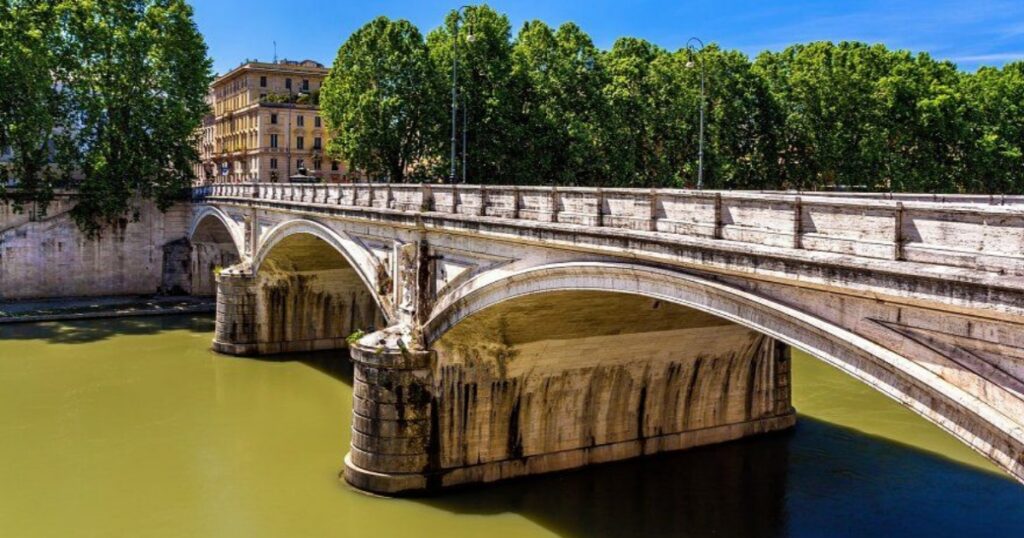
This ancient Roman bridge connects the region of Piazza Navona and the Palace of Justice. Angelo Vescovali, an architect, created the Ponte Umberto, which was constructed between 1885 and 1895. Umberto I, the Italian King, was honored by having the bride named after him.
The structure consists of three travertine-covered stone arches. The span measures 105 meters long.
15) Bridge Arkadiko
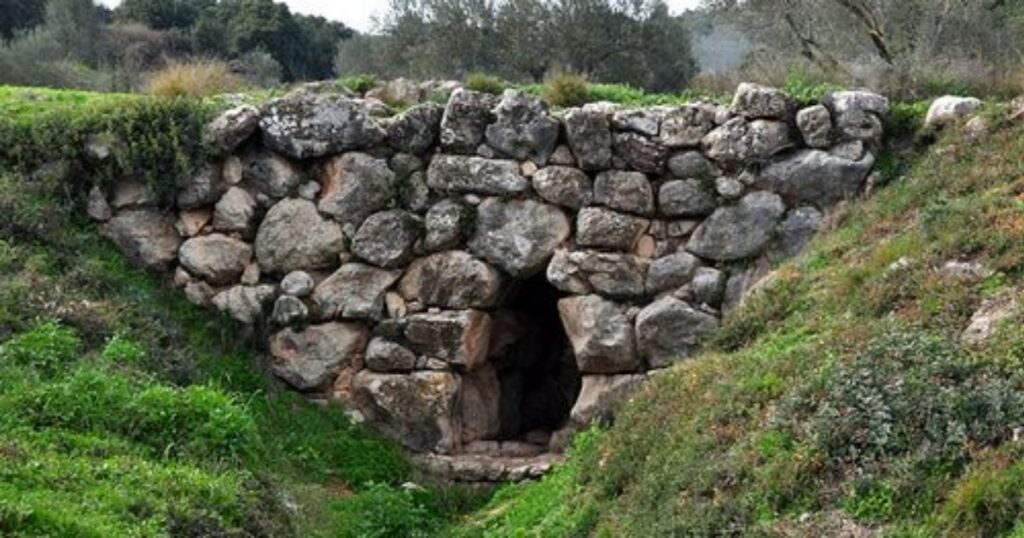
The oldest arch bridge that is still in service is the Arkadiko Bridge in Greece. It was constructed sometime between 1300 and 1200 BC, during the Greek Bronze Age. Therefore, it has undergone several changes to get to where it is today. Back in Mycenaean times, it served as a component of a military route network connecting the cities of Tiryns and Epidauros. With a road width of around 2.5 meters, it has a wider berth than a typical footbridge (8 ft).
According to historians, this extra width was created so that the bridge could support chariots. Its construction from limestone boulders—without using any mortar or other binders to keep the stones together—makes it even more stunning. That indicates that the bridge has endured for more than three millennia solely due to Mycenaean building expertise.
Final Word
This article features some of the most stunning Roman bridges, and we hope it encourages you to visit many of them on your subsequent trip.
Which one of the bridges is the most beautiful in your opinion?!



